Overmolded cable assemblies are widely known for their superior performance, attractive cosmetics, and the fact that they can be customized for nearly any application. But overmolded cables also require a sizable investment in hard tooling well before the first cables are ever produced.
A custom overmold tool can cost several thousand dollars and take weeks to manufacture. For some projects, this is a dealbreaker and will force engineers and buyers to scramble, looking for alternate options. However, some overmolded cable suppliers maintain a number of overmold tools that can be used for common connector schemes.
For the right projects, these existing overmold tools (also known as “house tooling”) can be used in place of a custom expensive overmold tool.
What is House Tooling?
House tooling is the collection of existing hard tools that are owned and maintained by a particular cable manufacturer. These “house tools” help create the innermolds and overmolds that are used in cable assembly manufacturing. House tooling may be used in lieu of a custom tool; however, some limitations exist since these cannot be modified or tailored whatsoever.
Custom cable assembly manufacturers will determine what tools (if any) can be used as house tooling. These are typically catalogued and maintained, allowing numerous customers to use them. The exact number of tools and the connector schemes that they support can vary from manufacturer to manufacturer. Typically, house tools are available for numerous low-complexity connector designs that are common enough to justify the investment.
We will discuss in this blog post the 5 common designs that Epec routinely supports using house tools. These solutions can be used for new projects incurring no tooling expense. As a result, the weeks of lead time required to design and build the tool can be avoided. These connector designs are readily available for new projects and are ubiquitous enough to cover most standard interconnect requirements.
5 Design Options for House Tooling
1. USB Connectors
Universal Serial Bus (USB) is a standard that covers a wide range of common connectors and cable configurations. USB connections are used on many of the products in our everyday lives. It’s likely that your laptop has several USB ports, each with a slightly different protocol and data transfer speed. The wireless mouse you may be using interfaces to your computer by a small USB dongle, likely with a USB-A type connector. USB connectors are common in household electronics; however, they can be used anywhere that low voltage and less than 5 circuits or conductors are required.
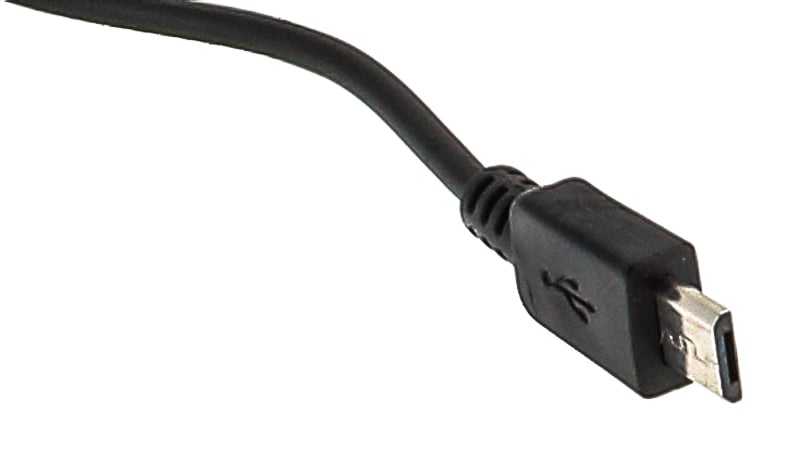
Micro USB connector overmold with house tooling.
The USB portfolio of connectors has been broken out into standard, mini, and micro configurations. Over time, many of these USB connectors have changed or been decommissioned. Currently, the most common USB types are USB A, Micro USB, and USB C. House tooling is available for most of the USB connector offerings.
2. RJ45 Jacks
The RJ45 connector type is one of the most common for ethernet cables. Short for Registered Jack 45, this connector is an 8-position and 8-conductor connector that is equipped with a locking tab. The connectors themselves are typically an injection molded hard plastic that is standardized to the specification. While most of the applications for this connector are used to transmit high speed data, the 8 conductors can be reduced or swapped enabling this scheme to be used for nearly any low-voltage application.
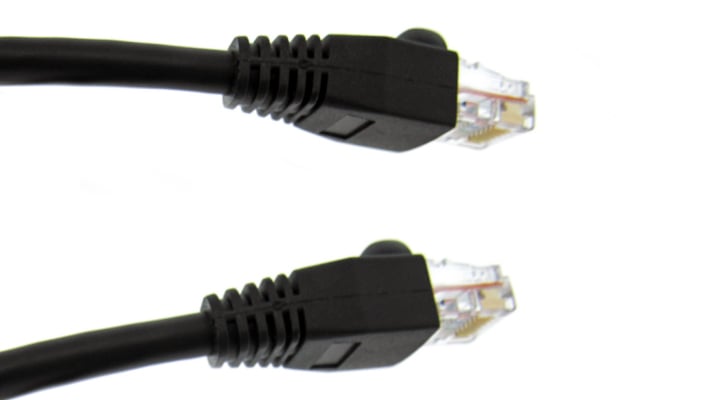
RJ45 connector overmold with house tooling.
The overmold for these connector types can vary in design and complexity. Many of these RJ45 connectors are designed with a sliding boot that acts as a protective cover. The primary benefit of the available house tooling is that it provides a ruggedized strain relief on the rear of the connector. This is especially important for connector types such as RJ45 that are designed for fine gauge wires.
3. M5/M8/M12 Circular Connectors
M5, M8, and M12 are some of the most common metric circular connectors on the market. This series of circular connector represents a low-cost option for ruggedized high-power applications. These connector types come in a variety of standard metric sizes and offer a locking polarized mate. Most M5, M8, and M12 connectors offer some type of waterproof seal and can handle power ratings of up to 250 volts and 15 amps.
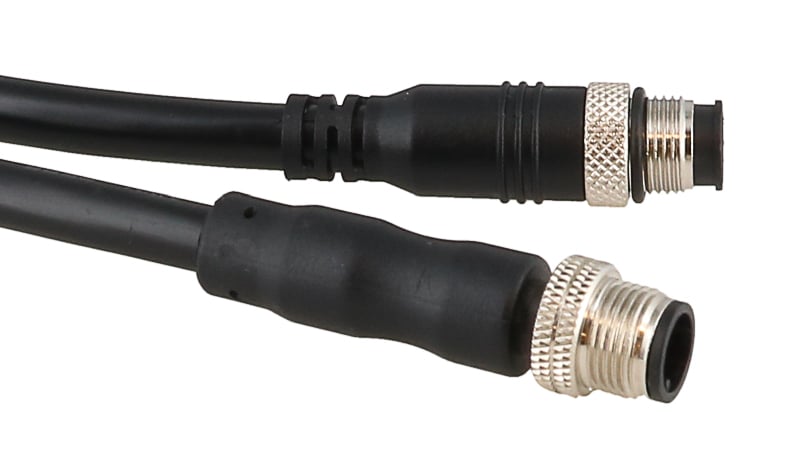
M12 connector overmolded with house tooling.
Since most applications for these metric circular connectors use large wire sizes, it is important to review the cables outer diameter (OD) before considering if house tooling is an option.
Cable manufacturers are reluctant to modify any house tooling, which may be necessary to accommodate the build. For instances like these, reviewing the design objectives with a full-service cable manufacturer like Epec can help address challenges early on in development.
4. RCA Jacks and Plugs
An RCA jack or plug is a common audio-visual interconnect that originated in the mid-1900s by the Radio Corporation of America. Also known as a phono plug, these connectors are typically one circuit per connector and press fit into one another. For the readers who grew up with a Nintendo Entertainment System, many of these consoles connected to your television by three RCA cables – two plugs for stereo audio and a third for video.
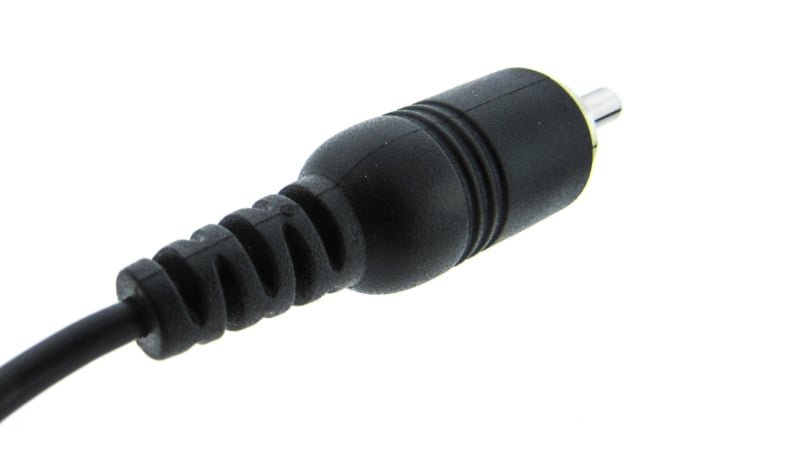
RCA jack overmold with house tooling.
An RCA jack or plug is a great option for any low-complexity cable because of its simplicity and widespread use. Many RCA connectors are color coded to provide a visual confirmation of proper installation. When using house tools, the overmold color can vary from project to project as long as there are no dimensional modifications to the tool.
5. Barrel Connector
Barrel connectors are technically coaxial connectors, and unlike their RF (radio frequency) cousins, they are primarily used as power supply connectors. The coaxial design, which is comprised of a center pin and an outer shell, enables the center pin to carry supply voltage while the outer shell is the return to round. These connector types are a simple and concise design that is ideal if only two circuits are used.
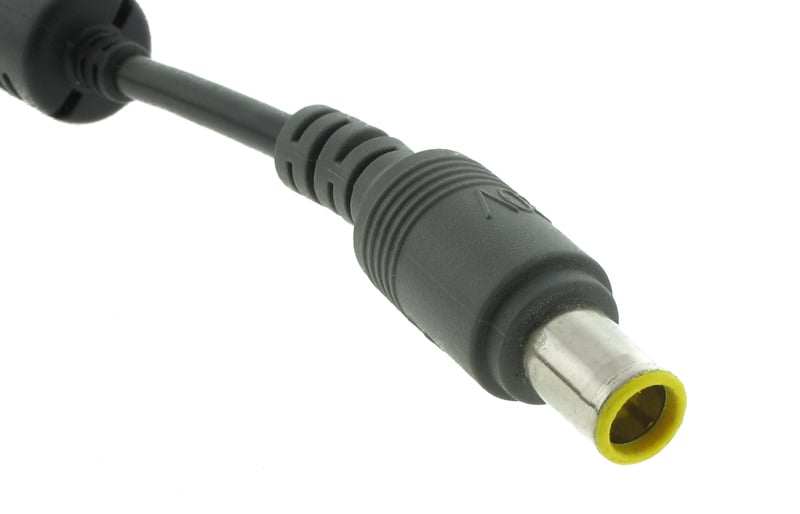
Barrel connector made with house tooling.
The most common barrel connector sizes are 3.5mm and 5.5mm. These connectors are named and defined by the shell outer diameter that is measured in millimeters. Barrel connectors come in dozens of configurations, but not all sizes have existing house tooling available. Though house tooling exists for several of these common sizes, it’s recommended to review the available tooling options before freezing the design.
Overmolded Cable Tooling Expense Considerations
There are many benefits associated with adding an overmold to your custom cable assembly. Most importantly, the overmold helps protect the delicate electrical connections within, and it serves as a means of strain relieving the cable.
As cables are routed, flexed, and bent, these movements can cause additional strain on the backside of your cable’s connector, and that will eventually lead to an open circuit, loose pin, or other damage. Without an overmold or other means of strain relieving the connector, the cable is at risk of a premature failure, especially in harsh environments.
Another benefit from adding an overmold to your cable is that it provides a cosmetically attractive finish. The overmold can be designed with smooth textures, custom artwork, or embossed features that serve as handles or grips. Overmolds can be colorized and match other system components or brand color schemes. Overmolds offer high levels of customization in virtually any shape and are an excellent option to consider for any new project. All these design benefits can be realized using a house tool.
Additionally, overmolds can be used to encapsulate and secure specialty design features such as splices, breakouts, and other custom components. Items such as magnets, PCBAs, and sensors can be fixtured within an overmold tool allowing them to be securely attached to a cable. As the design complexity increases, multiple overmold tools may be required to complete the project.
Summary
While adding an overmold to your custom cable provides several benefits, including an overmold can add both cost and lead time. Because of this fact, it is especially important to consider design options with no tooling expense.
Designing a custom cable with standardized connectors increases the likelihood that tooling exists and can be used for the desired application. Many cable manufacturers maintain an extensive list of house tools that are already in place. Before it’s too late, a discussion with a full-service manufacturer like Epec can help review options that may save time and money for your new custom cable assembly project.
Key Takeaways
- House tooling eliminates upfront costs by using pre-existing overmold tools, helping projects avoid the expense and long lead times of custom tooling.
- USB, RJ45, and barrel connectors are common designs with available house tooling, making them cost-effective options for many low-voltage and data applications.
- M5, M8, and M12 circular connectors benefit from house tooling as rugged, high-power solutions, though cable outer diameter must be carefully reviewed before use.
- RCA jacks and plugs remain practical choices for simple, low-complexity assemblies, with house tooling supporting color variations without dimensional changes.
- Overmolds improve durability and appearance by protecting connections, providing strain relief, and offering cosmetic customization while reducing the risk of premature cable failure.
















